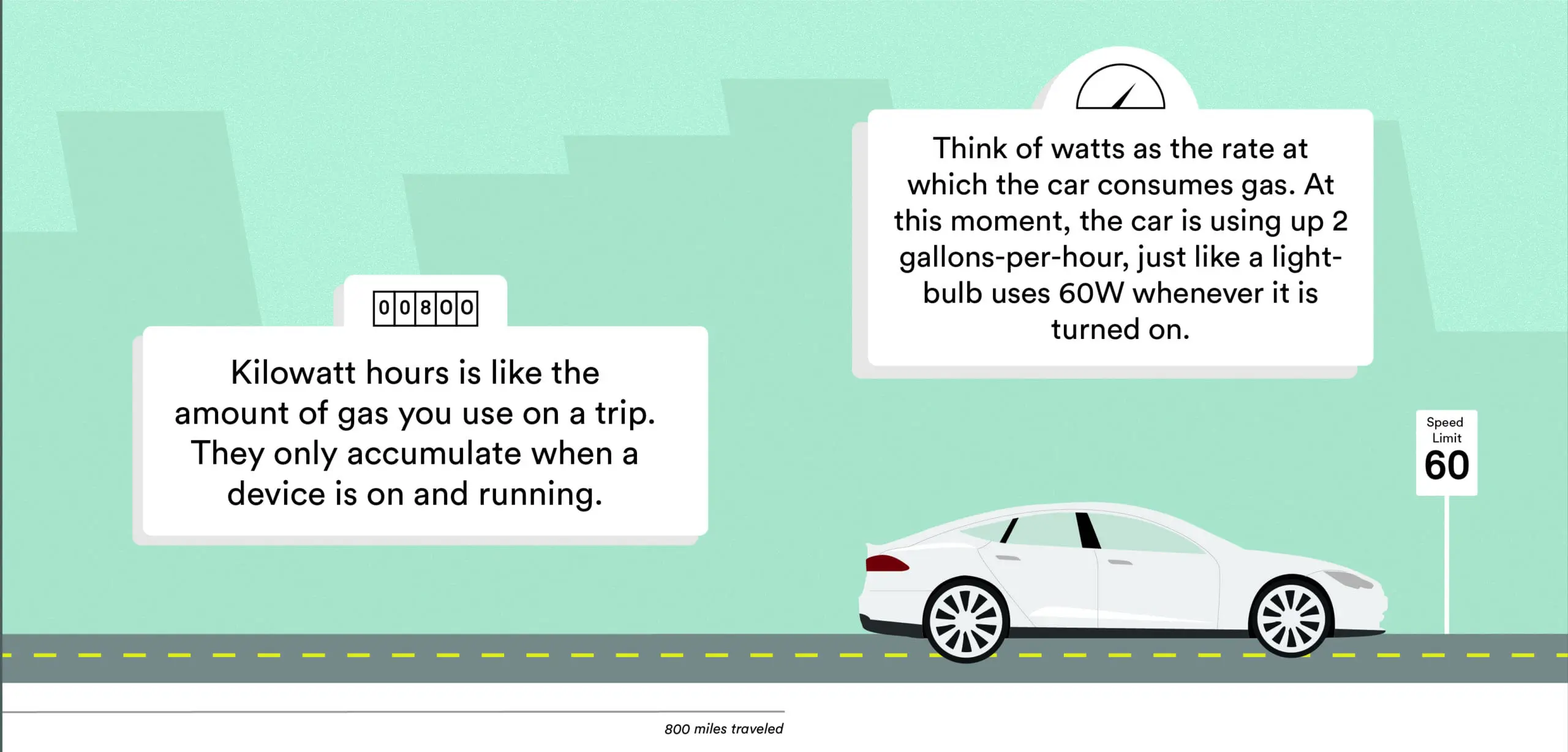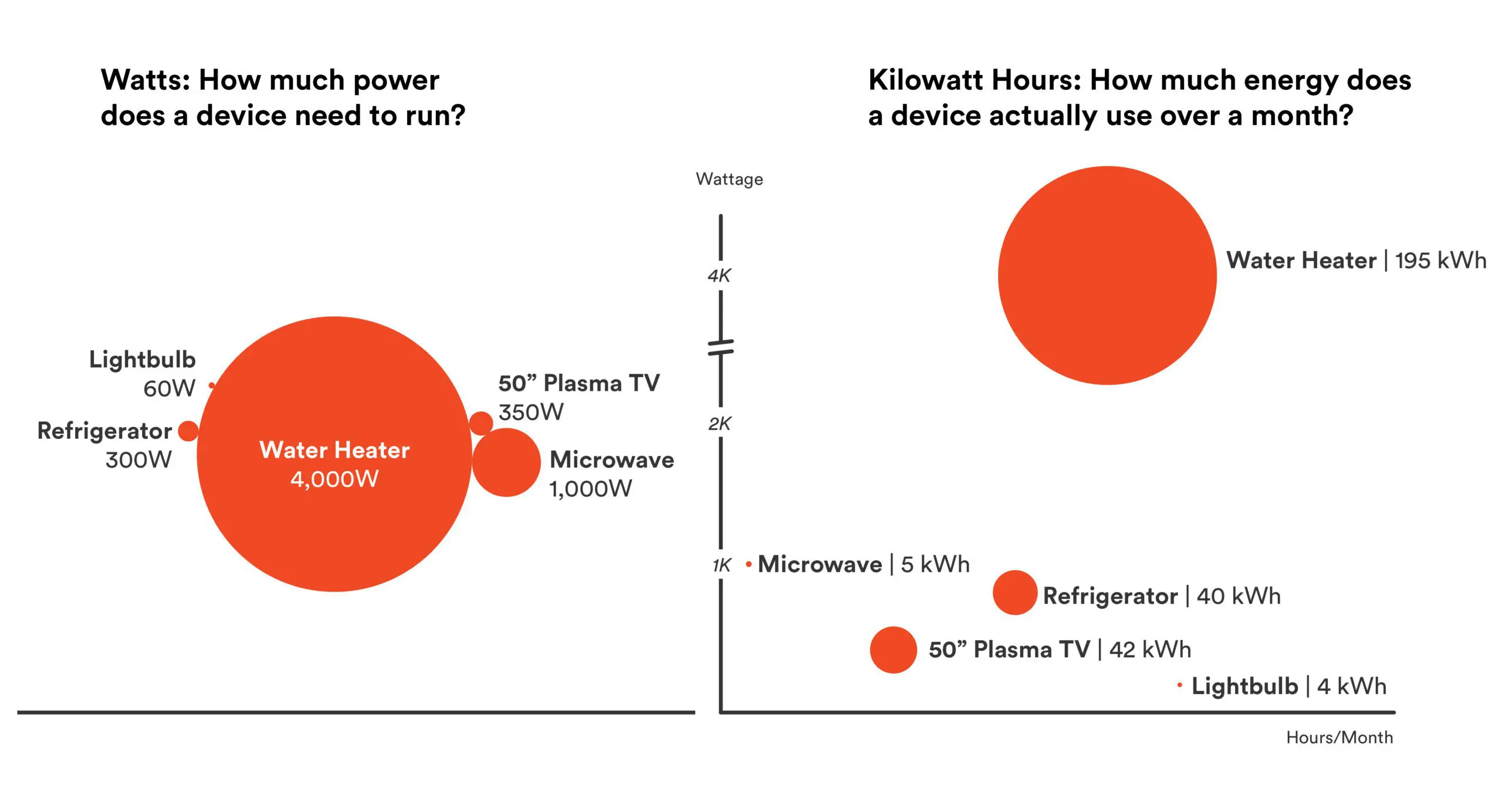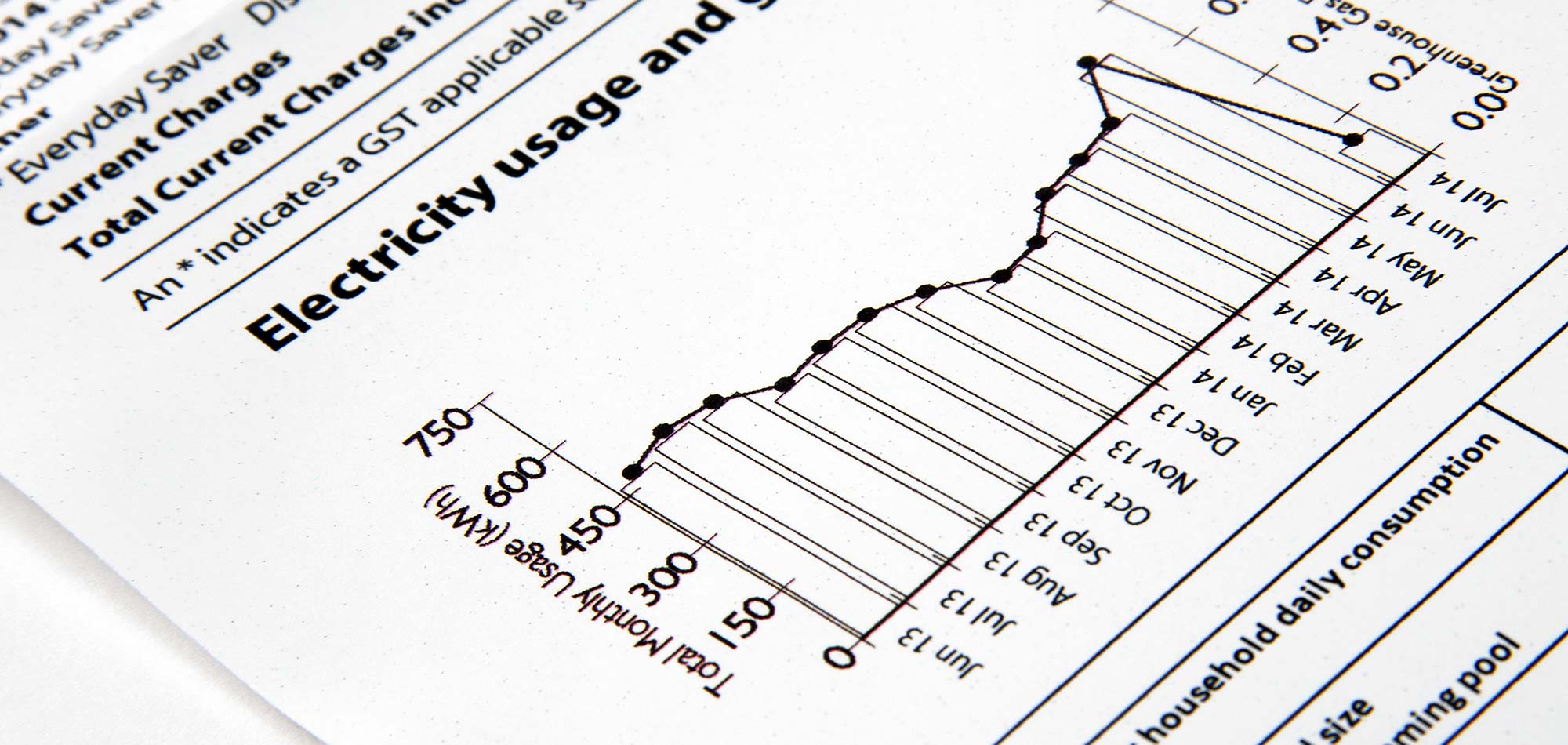Watts and Killowatts
A watt (W) is a measurement of the rate at which electricity is flowing. Different devices need different rates of energy to run, which is why a coffee maker might use 900W, but a ceiling fan would use 65W. You can think of watts as the electrical equivalent of horsepower. (Fun fact: 1 horsepower=745W). Kilowatts are just an easier way to measure large amounts of energy: 1000 watts is 1 kilowatt.
What About “Kilowatt-Hours”?
Electric bills charge by the “kilowatt-hour,” or “kWh.” One kilowatt-hour is the amount of energy consumed if energy is consumed at an average rate of one thousand watts (one kilowatt) for one hour.
We know, we know, it’s such an awkward term! In terms of the energy needed to power a car, think of kilowatt-hours as gallons of gasoline. Even though “kilowatt-hour” sounds like it should measure a rate because it has the word “hour” in it, it actually measures a quantity of energy. Watts are the measure of rate, and you can think of watts as gallons-per-hour consumed. When you’re driving a car, you can say “I’m currently using up gasoline at a rate of 2 gallons-per-hour.” However, were you to add up the amount of gas you used in the last month, you wouldn’t say “I used 2 gallons-per-hour this month” to represent the total amount of gas your car consumed. You would just say “I used up 27 gallons this month.” Another real world example: when your microwave is on, it is using somewhere between 750 watts and 1100 watts, depending on the type of microwave. However, on the average monthly electric bill, your microwave might only contribute 5 kilowatt-hours.

Watts vs Kilowatt Hours
Looking at these five common household devices, you’ll notice that watts and kilowatt-hours measure up differently. For example, a microwave uses significantly more watts than the plasma TV, but significantly fewer kilowatt-hours. This is because kilowatt-hours is the measure of total energy consumption, so it depends on how long the appliance typically stays on. While a microwave uses more watts, it only runs for a couple of minutes each time it runs, so it has a low kWh. Meanwhile, a TV uses fewer watts, but in most houses will run for hours at a time, so it has a high kWh. You can also see this difference in your Sense Home app. For example, while you may see a noticeable bubble pop up in your “Now” page when your microwave turns on, the percentage of power it takes up over time (as seen in the trends chart) is actually quite small. The lightbulb (likely an energy efficient LED bulb) uses such little energy that it’s barely visible in comparison.

Typical wattage and monthly kWh for five household devices
Data from: Source 1, Source 2, Source 3, Source 4
When Do You Use Kilowatt-Hours and When Do You Use Watts?
Kilowatt-hours are used for electric bills because they can represent the amount of electricity over a time period – so the total for the month in most electric bills. In contrast, the “Now” screen of Sense shows your rate of energy consumption right now, so shows this as watts.
Hopefully this clears up the mystery of the watt!
Happy energy saving,
-The Sense Team
